Enab Baladi’s Investigation Team
Ninar Khalifa | Mohamed Homs | Mourad Abdul Jalil
Only four days after the beginning of the National Army’s deployment in northeastern Syria as part of the Turkish military operation, videos showing violations against Syrian Democratic Forces (SDF) fighters started spreading.
People, said to be SDF Kurdish fighters, shot dead on a side road after being handcuffed jn the back, while the killers uniforms and words clearly indicated their identity.
The scene that had been circulated in a video recording on October 13, raised criticism against the National Army, which includes the Free Army factions and which is affiliated to the Ministry of Defense in the Syrian interim government of the opposition coalition.
At the time, the NA confirmed the arrest of involved individuals in carrying out field executions, and their referral to investigation and the implementation of legal proceedings against them. Around the same time, Amnesty International accused the National Army members, especially those in Ahrar al-Sharqiya rebel group, of committing a “brutal” field execution against the prominent Kurdish-Syrian political activist, Hevrin Khalaf.
The National Army subsequently issued a code of conduct entitled “Fighters not Killers” in order to prevent violations and ensure respect for human rights during the execution of combat duties. It also set up a military court in the towns of Ras al-Ayn in Hasakah countryside and Tell Abyad in Raqqa countryside, to control the areas and prevent violations.
This was not the only incident, as the other side in the battle, the SDF, was also accused of committing similar violations, which were also not new. This is because the memory of the conflict in Syria documents violations committed by all the conflicting parties without exception, during which combatants and civilians were killed without holding perpetrators accountable.
In this report, Enab Baladi sheds light on the file of field executions in Syria committed by the major conflicting parties. The report attempts to identify their reasons and motives for such crimes, the position of international law, and the mechanisms of holding the perpetrators of these crimes accountable.
In the beginning, it was the Syrian regime
According to reports issued by human rights organizations and centers, some of which will be mentioned in the report, in the past years, executions were carried out against the captives of all “the armed conflict parties” in Syria, either through a policy of intimidation by some parties against others, or as individual cases committed by fighters.
The main targets of field executions are combatants from the conflicting parties, either from the regime forces and their militias, especially the Iranian militias and the Lebanese Hezbollah, opposition factions, jihadist groups, or Kurdish forces in the eastern region. International law, and in particular the Geneva Convention relative to the Treatment of Prisoners of War of 1949, affirms that no assault shall be committed against an unarmed person, a person who had handed over his arms or surrendered to the other party.
The regime forces started
The Syrian regime forces and their militias in various Syrian regions were the first to start the series of field executions. The violations they committed were distinguished by the fact that the premeditated killing was not carried out at the beginning of the events against fighters carrying weapons, but was rather carried out against peaceful demonstrators who posed no potential threat.
Social media websites, especially YouTube, are full of recordings showing regime forces’ carrying out hundreds of field executions against people they arrested as a result of their participation in peaceful demonstrations, or these forces’ execution of unarmed civilians when they stormed villages and towns that witnessed an anti-regime protests movement.
The first mass field execution was carried out on March 23, 2011, when regime forces stormed the Great Omari Mosque in Daraa and shot protesters inside the mosque, killing 30 people, according to a report by Human Rights Watch.
This brutal act was followed by hundreds of field executions by regime forces and their militias, most notably the Daraya massacre in August 2012, which killed more than 700 civilians, including 522 documented by name, according to the local council at the time.
In addition, at least 248 people were killed in al-Bayda village and Baniyas city in Tartous countryside, in May 2013, “in one of the bloodiest field executions since the start of the conflict in Syria,” as described by Human Rights Watch.
Executions after “Sharia trial”
Field executions were not limited to Syrian regime forces, but were also committed by “jihadist” groups that started to form more than a year after the start of the revolution, most notably al-Nusra Front, which was affiliated with al-Qaida before disengaging from it and taking names such as “Fatah al-Sham Front” and “Hay’at Tahrir al-Sham”. ISIS had also carried out several field executions in addition to other jihadist groups.
According to a Human Rights Watch report, at least 67 out of 190 civilians were executed on-site, although they were unarmed and trying to escape. These executions were carried out in villages in Syria’s Latakia Governorate by “jihadist groups” in August 2013, with the participation of Ahrar al-Sham, ISIS and al-Nusra Front.
Opposition factions are involved
In contrast, the Syrian opposition factions, represented by the Free Syrian Army (FSA), carried out slightly less field executions against other parties than the violations by regime forces and “jihadist” groups.
The most infamous field execution by opposition factions was in August 2012, when fighters affiliated to the FSA executed a group of what they called “Shabiha” in the city of Aleppo.
A video recording circulated at the time on social media websites showed the fighters’ arrest of a number of pro-regime members from the Berri family, whose faces were stained with blood, most notably the group’s leader, Ali Zain al-Abidin Berri, known as Zaino.
The FSA fighters took the detainees out of the school they were in and executed them with live bullets in front of a number of residents.
While the FSA leadership denounced the premeditated killing without trial and the actions it described as “irresponsible” and considered the field execution as “lacking the Free Army’s morals”. Amnesty International issued a statement calling for an immediate end to these violations with their documentation to be referred to the International Criminal Court.
Al Jazeera news channel reported at the time that the organization demanded an immediate investigation into the execution to hold the perpetrators accountable and stressed on the respect of international laws, including the Fourth Geneva Convention on Prisoners.
Kurdish forces are also involved
Although there is little visual evidence condemning the SDF, including the Kurdish People’s Protection Units (YPG), for carrying out field executions compared to the other conflicting parties, there have been widespread accusations against them nonetheless.
A report published in July 2019 by the Euro-Mediterranean Human Rights Monitor, indicates that violations committed by SDF forces include direct abuses against civilians through the field executions carried out by SDF members, claiming that these civilians had ties with ISIS.
The center’s report cited a number of videos that it had obtained, including one leaked video from the phone of a Syrian Democratic Forces (SDF) member in one of its prisons, which it said depicts the killings and abuse of young Arabs because of their refusal to enlist.
The center also talked about a video clip that dates back to May 2018 and shows an execution of a man and his wife carried out by an SDF member. They were riding their motorcycle when they were stopped and executed just for passing by a wall on which phrases against a Kurdish leader were written.
Neglect, apologies, or justification
How do the parties to the conflict deal with field execution charges?
Social media contribute to the embarrassment of factions or military entities whose fighters are carrying out field executions, which pushes these forces to justify or deny such acts. Some parties to the conflict either resort to the argument of “individual actions” on these incidents or fully ignore them.
“National Army” presents apologies
After the spread of a video showing National Army members executing a member of the Syrian Democratic Forces (SDF), on October 12, the National Army acted on the disciplinary level and established a committee of “Rights Restitution” to prevent and record abuses by its members. It also issued a notice on November 3, under the name “Fighters not Killers”, which sets out the standards that combatants and security services of the Turkish-backed faction should follow, as well as the conduct of dealing with “detainees” and war prisoners.
About the timing of the issuance of the code of conduct in the National Army, Mustafa Sijri, the head of the Political office in the Mutasim Brigade of the Army, talked to Enab Baladi, saying that they are trying to block some abuses through the code.
| The National Army includes the Free Army factions within the military formations that merged last September. It operates in Aleppo’s northern areas under Turkish influence, and new outposts in the Raqqah and al-Hasakah countryside. |
Regarding the carrying out of field executions, Sijri added that they “do not meet our religious beliefs, customs and traditions,” pointing out that the official position of the “National Army” is embodied in the statement issued by the Defense Ministry. This statement announced the establishment of a commission headed by Brigadier General Hassan Hamada, Deputy Minister, while the issue of punishment and its level returns to the military jurisdiction.
The National Army Code of Conduct clarifies the moral, humanitarian and legal obligations that control the elements work while performing duties. It likewise seeks to respect human rights and protect public freedoms.
The Code’s rules include abstaining from, inciting or condoning any act of torture or cruel, inhuman or degrading treatment, and prohibiting taking pictures and videos during military tasks, citing the rules of “confidentiality and integrity of military action”.
The Code included the treatment principles of prisoners of war, providing that there should be no discrimination between them in regards to their origins, nationalities, religion, political or intellectual ideas and attitudes and prohibited the use of violence against “detainees” who show no resistance.
The code prohibited the use of violence and force during interrogation. Within the basic treatment principles of prisoners of war, “they are treated humanely at all times and any illegal act or negligence that causes the death of a prisoner in his imprisonment is prohibited and considered as a serious violation, ” the code cited.
The Code stated that it took into account the Third Geneva Convention on Prisoners of War, and included rules for the treatment of women prisoners, age, gender, rank and operating rules.
SDF denials
On the other side of the National Army, SDF did not comment on accusations against its members of acts of field executions and other charges related to disfigurement of the dead bodies, which is considered a “crime” and pushes for reprisals from counter-parties.
In February this year, a video documented the field execution of a person, without indicating his affiliation. The video shows Zaher Hamad al-Abdullah, a leader in the Kurdish People’s Protection Units (YPG), carrying out the execution by a PK machine gun after handcuffing the person.
SDF rushed to claim non-responsibility and expressed shock at the video that showed “people wearing clothes of the SDF committing a crime against someone who appears to be an ISIS prisoner,” as it cited.
However, the results of the investigation and the fate of the person carrying out the execution were not announced until today. In recent battles, during the Turkish operation against SDF-controlled areas in northeastern Syria, SDF did not address or comment on some of the videos posted on social media.
Last June 2017, a report by Human Rights Watch, confirmed that “Kurdish forces do not take into consideration international prisoners’ laws.”
Regime justifications
The Syrian regime has received the largest share of human rights violation reports since the beginning of the Syrian conflict. The largest number of human rights organizations reports and international condemnations of “war crimes”, including “field executions” was directed to the Syrian regime.
The regime did not recognize most of these abuses, and other abuses such as arbitrary arrests, torture and execution of detainees, and its official media treated other parties to the conflict as “terrorists” and “mercenary militias”, justifying all violations carried out against them.
At the beginning of Syrian revolution, the only acknowledgment came from the regime’s president, Bashar al-Assad, when he spoke of “security mistakes” in confronting the demonstrators, without providing further details.
Despite the ready-made excuses of the military and security grip of the regime, the laws governing the regime’s forces, issued by the Defense Ministry in Legislative Decree No. 152 of June 22, 1949, do not contain provisions for the treatment of prisoners of war or deterrent laws to prevent torture or execution.
The law, which Enab Baladi reviewed, includes one article providing for the feeding and cladding of prisoners of war and civilian prisoners in the military prison at state expense according to a special system set by the Defense Ministry.

Syrian young man kneeling blindfolded before being executed by armed groups in Aleppo – August 13, 2013 (time)
Field Executions as war crimes
How are the perpetrators held accountable?
With recurrent cases of field executions in the Syrian scene by several armed parties, some of which have been accompanied by disfigurement of the dead bodies, bragging about killings, and posting victims images on social media. These practices have caused community outrage and increased segregation, hatred and a desire for revenge.
Field executions are considered as a manifest and gross violation of the international legal principles, which emphasize the criminalization of all extrajudicial executions, arbitrarily, and without trial of any reason and motive.
The Fourth Geneva Convention, signed by 196 states in August 1949, protects civilians in war time and conflict, and prohibits sentencing or executions.
War crimes
The Geneva Conventions of 1929 described the rules guaranteeing the protection of prisoners of war, which were amended in the Third Geneva Convention of 1949, following the experiences deducted from World War II, and in the text of Additional Protocol I of 1977.
International humanitarian law emphasizes the respect of the dead’s dignity and the proper treatment of their bodies, while it takes all possible measures to know the identity of the dead persons and hand the dead bodies to their families.
Violations of these laws constitute a “war crime”, which is imprescriptible, and for which the perpetrators and their officials are held responsible. Even if the combatant commits these crimes on the orders of his commander, he cannot escape impunity, as the pretext of obeying orders does not justify committing war laws and violating them.
Documenting those abuses by Syrian and international human rights organizations, including the identification of the violator’s name and military affiliation, contributes to the prosecution of offenders by submitting their files to the specialized legal parties and concerned judicial authorities.
Public executions according to the law
The director of Syrian Legal Development Program (SLDP), Ibrahim Olabi, defined public executions as extrajudicial and illegal, where justice procedures are not followed.
Talking to Enab Baladi, Olabi pointed out that public execution is a criminal offense under international humanitarian law and international human rights law, as this punishment does not grant the defendant the right to defend himself or herself, in addition to the lack of witnesses or a court trial, based on the presumption of innocence principle.
Olabi explained that if a fighter confronts another in a battlefield or in an armed conflict and kills him, there is nothing to incriminate him. However, once a fighter gives up his will or ability to fight, he shall not be killed or executed, but has to be brought to trial if he has committed crimes.
For his part, the Syrian judge, Riyad Ali, defined public executions as those intended to take the victim’s life without any trial, or the result of a “formal” mock trial that did not meet the minimum fair trial conditions, where the victim did not have the rights to access defense mechanisms. This kind of executions is usually undertaken by army officers, who have no legal or judicial experience.
In an interview with Enab Baladi, Ali explained that public executions are intended to get rid of political or military opponents and fall under extrajudicial killings, as a mock trial means having no trial at all.
Ali indicated that “due to the seriousness of extrajudicial executions”, the Special Rapporteur on extrajudicial, summary or arbitrary executions has been appointed, noting that the Special Rapporteur’s mandate covers all countries irrespectively of whether a state has signed international conventions or not. He asserted that killing or executing a prisoner following a mock trial or without trial violates the Geneva Conventions of 1949.
Article 8 of the Rome Statute of the International Criminal Court (ICC) of 1998 also considers that all grave breaches of the 1949 Geneva Conventions, including deliberately depriving a prisoner of his right to a fair trial, issuing sentences and carrying out executions without prior sentences pronounced by a legally established court, which grants the defendant all recognized judicial guarantees, is considered a war crime.
Who are the war prisoners?A war prisoner is a term used only in the case of international armed disputes between two or more countries, to describe a captivated fighter of the regular army of one of these countries, according Ibrahim Olabi, director of the Syrian Legal Development Program. Olabi conveyed that this term becomes legally inaccurate when used in the context of non-international armed conflicts, as the person is then called a “detainee”. The international law is not updated at this level because wars take place usually between States. So, the legal description of a person, who gets caught during non-international armed conflicts, is still unclear. He stressed that regardless of the legal description, it is not permissible to execute this person publicly. Rather, the detainee must be treated humanely, protected against all kind of torture, and put on trial in the event of committing crimes, not only because he is a fighter, as fighting in armed conflicts is not a crime according to international law . For his part, Judge Riyad Ali explained that, in accordance with the Geneva Conventions of 1949 and their Additional Protocols of 1977, war prisoners are “members of the armed forces of a party to the conflict, as well as the militia or volunteering units that are part of such forces, in addition to members of militias and other volunteering units, including members of organized resistance movements, who belong to a party to the conflict and operate inside or outside their territory, even if the territory is occupied. ” He added that this term also includes “persons accompanying the armed ground, sea or air forces, such as civilians who work in the crews of warplanes, war correspondents and supply contractors, provided that they have a permit from the armed forces they are accompanying, and who get caught by the other party to the conflict,; as they are considered in this case as unable or unwilling to fight.” The Geneva Conventions indicate that, in the event of suspicion that a person has been arrested as a war prisoner, he or she shall be considered protected under the convention pending a sentence issued by the competent court. The Geneva Conventions emphasize that war prisoners must be treated humanely without any adverse distinction based on race, color, religion, belief, sex or any other criterion, and that women prisoners must be treated with all due respect to their feminine gender. These conventions prohibit retribution and retaliation against prisoners, who may only be tried by a competent court with full guarantees of fair trial and defense rights, while at the same time, war prisoners may not waive any of their rights, in whole, or in part, under the Geneva Conventions.” |
How are the perpetrators of public executions held accountable?
On the accountability mechanisms employed against the perpetrators of public executions in international law, legal experts Ibrahim Olabi and Riyad Ali confirmed that the same procedures are followed as in other war crimes.
They also indicated that the procedures are implemented by the ICC, local courts and the specialized courts set up for that purpose.
Olabi pointed out that breaching the law is treated like any other offence, depending on the available international or local courts and the extent of its jurisdiction, as well as international willingness to try the violators.
Ali, a former judge, explained that the procedures for trial and accountability for war crimes are undertaken either through the ICC, based in the Hague, the Netherlands, under Article 8 of the Rome Statute, which requires that the concerned state signs the aforementioned convention (Syria is not a signatory), or when the UN Security Council decides to refer the case, with the consent of the five major members of the Council.
He added that accountability procedures could also be implemented through the establishment of criminal tribunals in the concerned state, as Yugoslavia and Rwanda did, which requires a resolution of the UN Security Council provided that the veto is not used.”
Regarding the means available to hold the perpetrators of war crimes in Syria accountable, Ali pointed out that if there is a serious political will, the Syrian authorities can try the offenders according to national and international judicial and legal mechanisms.
He added that the new Syrian state can sign the Rome Statute of the International Criminal Court and refer the accused to that court.
The families of the victims or the victims themselves have the possibility to file lawsuits in the courts of states which have signed the Rome Statute, bearing in mind that war crimes are imprescriptible.
The universal jurisdiction implemented in some European courts empowers the judicial authorities to investigate crimes committed outside its territory, even if the offender or the victim is a national of another country.
The International Criminal Court (ICC)The International Criminal Court (ICC) is the first independent judicial body established in 2002 under the Rome Statute, signed in 1998, as the first court to try individuals accused of war crimes, crimes against humanity and genocide around the world. As of 2012, 121 countries, which have signed the Rome Statute, are facing sharp criticism from the international powers, including the United States, Russia, China and India, which either refused to sign or subsequently withdrew from the convention.
|
if you think the article contain wrong information or you have additional details Send Correction
النسخة العربية من المقال
-
Follow us :
Most viewed
- 311 casualties among government forces and civilians in Syrian coast
- Al-Sharaa and Abdi reach agreement on merger of SDF into Syrian state
- Syrian Defense Ministry appoints "Abu Amsha" as Hama Brigade commander
- Did Syrian state fall into coastal ambush?
- Rights organization documents government and civilian deaths in Syrian coast











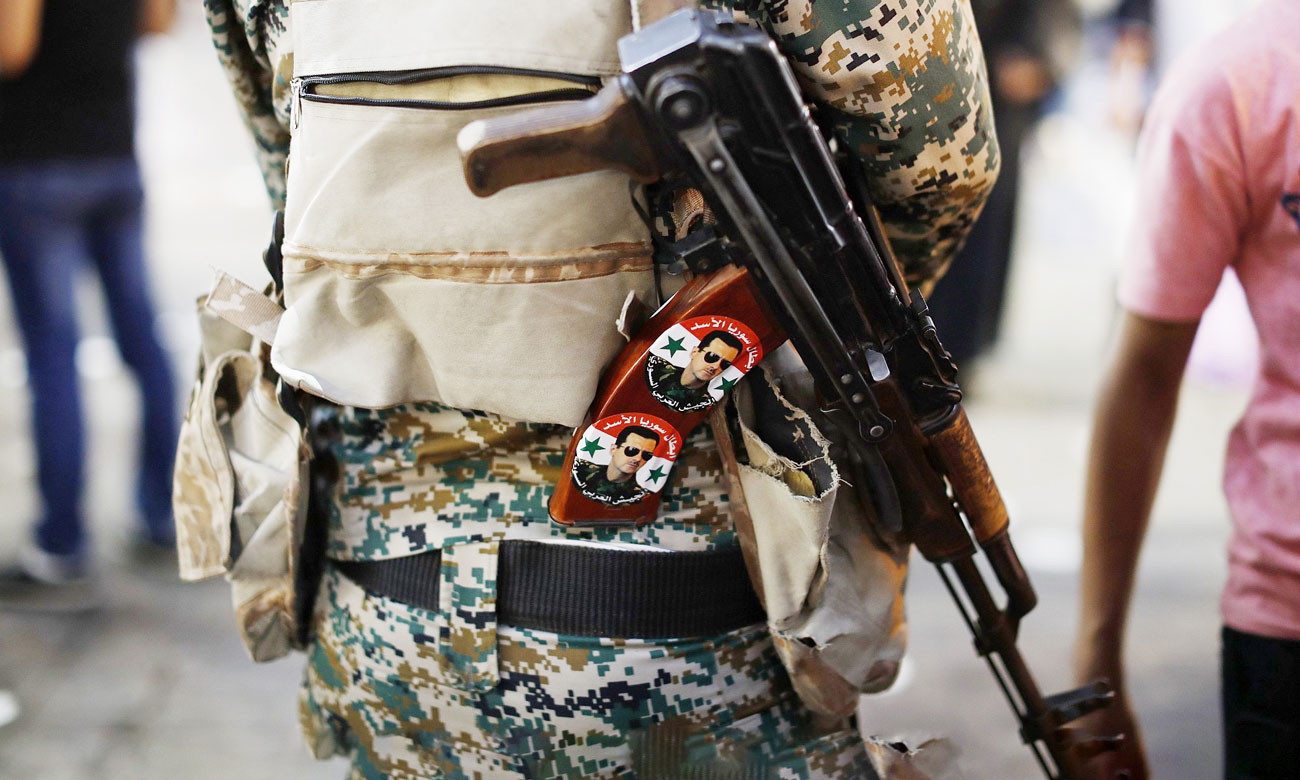
 Regime forces soldier with a 47-AK rifle standing at a checkpoint in Souk Hammadiya in Old Damascus, July 19, 2018 (AFP)
Regime forces soldier with a 47-AK rifle standing at a checkpoint in Souk Hammadiya in Old Damascus, July 19, 2018 (AFP)





 A
A
A
A
A
A


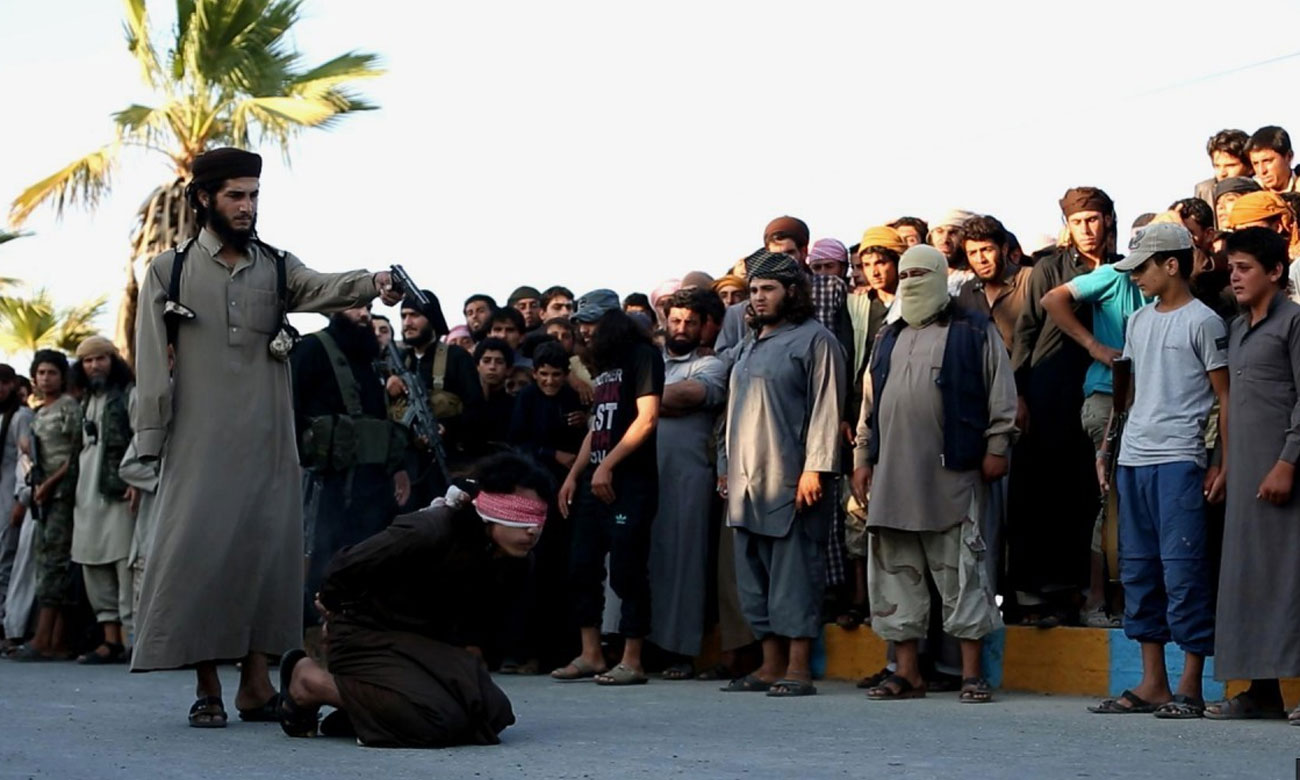
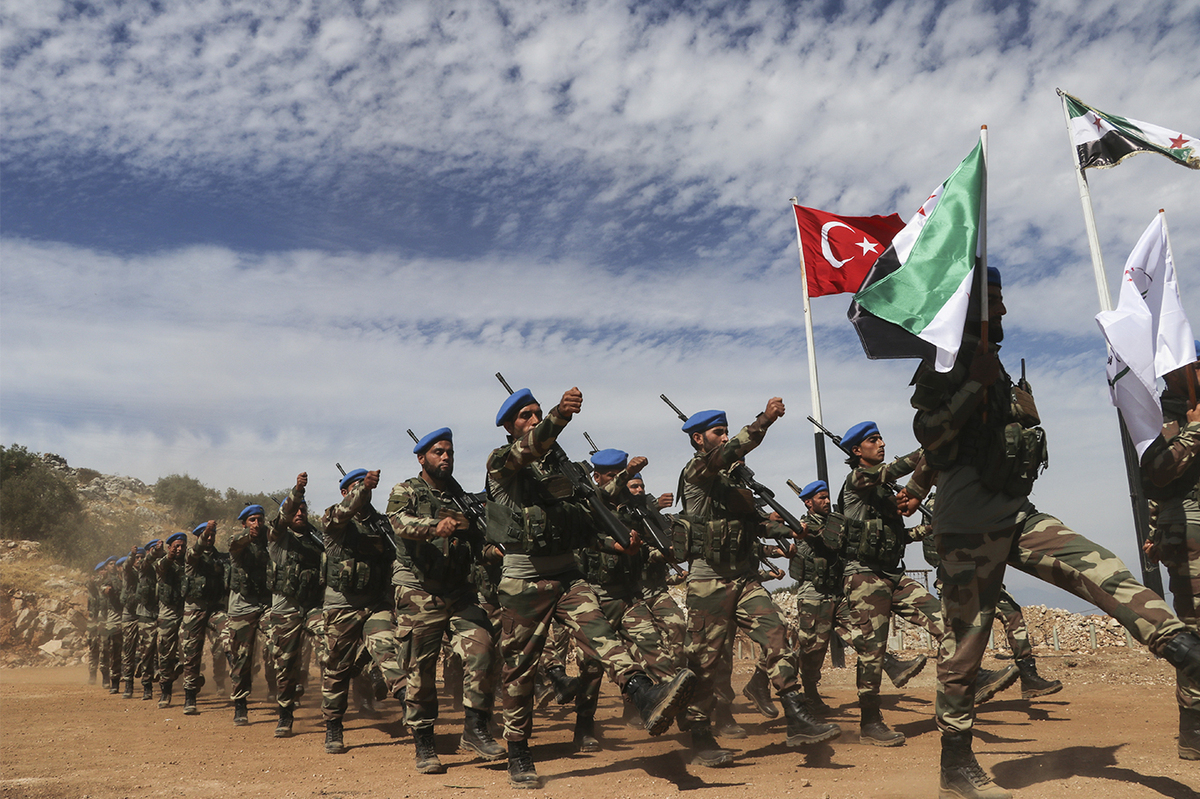

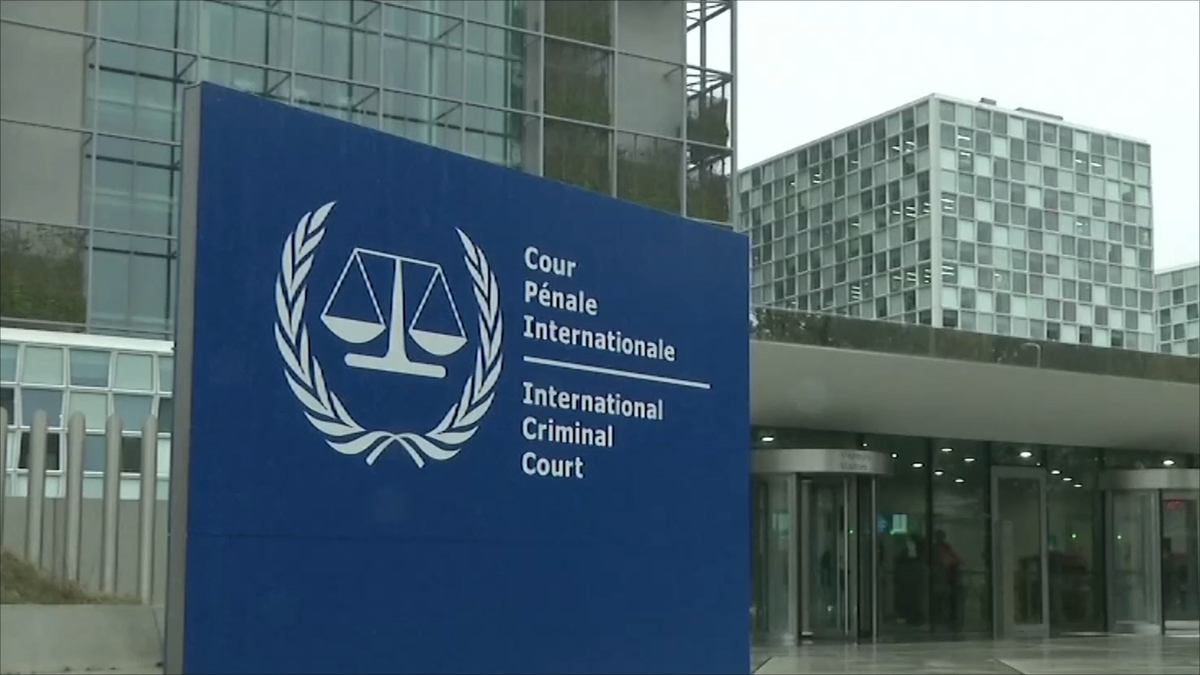


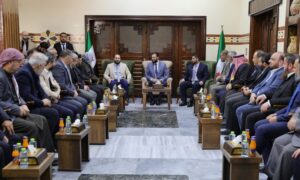
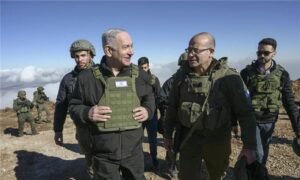
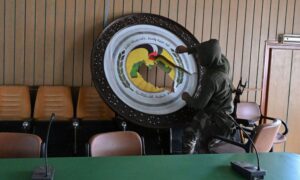
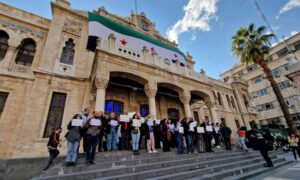
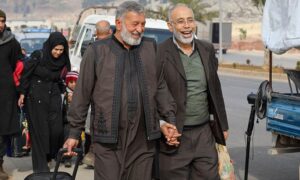
 More In-Depth
More In-Depth